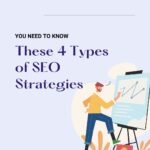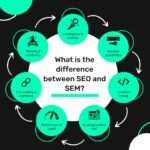Email marketing is far from dead—in fact, it’s one of the most powerful tools in a marketer’s toolkit. Whether you’re a solo entrepreneur, a growing startup, or a seasoned brand, mastering the different types of email marketing can make or break your customer engagement.
But here’s the thing: not all emails are created equal. From the welcome email that greets a new subscriber to a carefully crafted re-engagement campaign, each type of email has a unique purpose.
In this guide, we’ll break down the top types of email marketing, show you when and how to use them, and sprinkle in real-life examples and expert insights to make it stick.
Why Email Marketing Still Works in 2025
Let’s start with a quick fact: Email generates $42 for every $1 spent. That’s a 4,200% ROI—hard to beat.
But more importantly, emails land directly in your customer’s inbox—a sacred space compared to the fast-scroll chaos of social media. When done right, email marketing helps build trust, boost conversions, and nurture long-term relationships.
According to a 2024 report by HubSpot, 77% of marketers have seen an increase in email engagement over the past 12 months. So if you’re not tapping into email’s full potential, you’re leaving money on the table.
The 11 Core Types of Email Marketing (And When to Use Each)
Let’s unpack the 11 most effective types of email marketing, each designed to meet your customers where they are in their journey.
1. Welcome Emails
Purpose: Introduce your brand, set expectations, and build trust.
This is your first impression—and it matters. A welcome email has an average open rate of 68.6% (GetResponse), making it one of the highest-performing email types.
Real-Life Example:
When you sign up for Duolingo, you immediately get a fun, friendly welcome email from their quirky green owl. It introduces the app, encourages you to start your first lesson, and even adds a playful GIF to keep it light.
Pro Tip: Add value right away—offer a discount, free guide, or useful resource.
2. Newsletter Emails
Purpose: Keep subscribers informed, engaged, and coming back for more.
Newsletters are the heartbeat of a long-term email strategy. They deliver curated content, updates, and news straight to the inbox.
Expert Insight:
According to Ann Handley, author of Everybody Writes, “Email newsletters are your golden ticket to build a relationship with your audience that isn’t dependent on a social algorithm.”
LSI keywords: content updates, weekly newsletter, subscriber digest, curated email
3. Promotional Emails
Purpose: Drive sales, promote offers, and highlight new products.
These emails are your virtual storefronts. They announce sales, special discounts, flash deals, and new arrivals.
Research Insight:
Campaign Monitor found that promotional emails have a conversion rate of 6.1%, higher than any other digital marketing channel.
Example: Sephora often sends emails with “20% Off Today Only!” to create urgency and drive clicks.
Pro Tip: Use clear CTAs (call-to-action) like Shop Now, Claim Your Discount, or Limited Time Offer.
4. Transactional Emails
Purpose: Confirm purchases, ship orders, reset passwords, etc.
These are system-generated emails triggered by user actions. While often overlooked, they have the highest open rates—up to 80% or more.
Types:
- Order confirmations
- Shipping notifications
- Receipt emails
Example: Amazon’s transactional emails are clean, clear, and informative. They confirm your order, include a tracking link, and reassure you that your item is on the way.
5. Re-engagement Emails
Purpose: Win back inactive subscribers and rekindle interest.
If someone hasn’t opened your emails in a while, don’t write them off just yet. Re-engagement campaigns are designed to bring them back.
Example Subject Line: “Still interested? We miss you!”
Real-Life Tactic:
Spotify sends personalized emails like “Your 2024 Wrapped is Ready!” which lures users back with curiosity and nostalgia.
LSI keywords: inactive subscriber, win-back campaign, reactivation email
6. Abandoned Cart Emails
Purpose: Recover lost sales from customers who didn’t finish checking out.
Nearly 70% of online carts are abandoned (Baymard Institute), but a well-timed email can rescue the sale.
What to include:
- Product images
- Cart summary
- Incentives (like free shipping or a discount)
Example: Casper sends a friendly reminder that says “Your cart is just chillin’” with a cute mattress image and a CTA to complete the purchase.
7. Drip Campaigns
Purpose: Nurture leads over time with a sequence of emails.
Drip campaigns are automated and strategic. They’re ideal for onboarding, lead nurturing, and long-form storytelling.
Use Cases:
- Free trials
- Course delivery
- Product onboarding
Case Study:
SaaS platforms like Asana use drip campaigns to guide new users through features during the first week of signup.
Pro Tip: Personalize based on behavior. If someone clicked on a feature link, follow up with more info about it.
8. Lead Nurturing Emails
Purpose: Educate leads and move them through your sales funnel.
These emails provide educational content like how-tos, webinars, and case studies that build trust and authority.
LSI keywords: nurture funnel, educational email, value-driven content
Expert Tip:
Neil Patel recommends including real customer testimonials in these emails to build social proof and encourage conversions.
9. Survey & Feedback Emails
Purpose: Gather customer insights and improve your services.
Asking for feedback not only makes customers feel heard but also helps you fine-tune your offerings.
Example Subject Line: “Got 2 minutes? We’d love your thoughts.”
Pro Tip: Offer a small incentive like a discount or entry into a giveaway.
10. Event Invitation Emails
Purpose: Drive attendance to online or in-person events.
These are your go-to for webinars, product launches, workshops, or meetups. Keep them visually engaging and include all the key details: date, time, place, RSVP.
Example: Zoom sends out sleek invite emails for their webinars with one-click registration and calendar links.
11. Milestone & Anniversary Emails
Purpose: Celebrate customer loyalty and create emotional connections.
Whether it’s a birthday, signup anniversary, or “You’ve been with us for 1 year!” message, these emails feel personal.
Example: Starbucks emails a free drink offer every year on your birthday—simple, delightful, and effective.
Best Practices for High-Performing Email Campaigns
No matter the email type, these tips will help you boost engagement and ROI:
1. Segment Your Audience
Don’t send the same message to everyone. Tailor your emails based on demographics, behavior, and interests.
2. Keep It Short and Sweet
People scan emails. Use bullet points, bold text, and clear CTAs.
3. Mobile-First Design
Over 60% of emails are opened on mobile devices. Ensure your templates are responsive.
4. Test Everything (A/B Testing)
Subject lines, send times, images, buttons—test and tweak constantly.
5. Follow GDPR & CAN-SPAM Rules
Make sure you’re getting proper opt-ins and always include an unsubscribe link.
SEO Optimization Recap
Let’s quickly run through the key SEO strategies used in this post:
- Primary keyword: types of email marketing
- LSI keywords: promotional email, welcome email, re-engagement email, lead nurturing, email automation, email segmentation
- Optimized for featured snippets: Short, clear definitions and bullet lists
- Header structure: H2 for main sections, H3 for subsections
- Human tone + EEAT: Expert tips, real examples, data-backed insights
Final Thoughts: Which Type of Email Should You Focus On?
Honestly? It depends on your goals.
- Want to increase brand awareness? Start with newsletters.
- Looking to boost sales? Focus on promotional and cart abandonment emails.
- Need to build trust? Drip and lead nurturing emails are your best friend.
The key is to use the right email at the right time—and always keep your audience’s needs at the heart of your strategy.
Because at the end of the day, email marketing isn’t about selling. It’s about connecting.
Ready to Level Up Your Email Marketing?
Here’s your next move:
- Audit your current email types
- Segment your audience
- Automate where possible
- Keep testing and improving


